What is needed to effectively fight the bear?
Medvedka is a large insect (body length - 5-8 cm) that lives underground and, like most underground inhabitants, looks unattractive and even frightening. Fighting the bear is an indispensable condition for obtaining good yields, since even one insect can destroy a huge number of plants. The pest's priority is cabbage, tomatoes and potatoes. But he will not give up other garden crops either.
The second name of the insect is the earthen cricket.
Harm from the bear
Many gardeners get scared when they see a bear for the first time, but the insect is not harmful to humans - it is not poisonous, it does not bite. The pest feeds on underground parts of plants, eating up roots and roots. After that, the stems also lodge. If you pull out such a plant from the soil, it turns out that it has practically no root, while the stem is healthy, not affected by rot. On this basis, you can accurately determine that an earthen cricket has wound up in the garden. Cut plants are not the only sign of a bear. Crawling in loose garden soil, it digs winding tunnels that are visible on the soil surface as oblong mounds.
In the country, moving on its own moves, the insect eats the roots of both cultivated and wild plants, clearing the area of perennial weeds. In addition to plants, earthen crickets eat some harmful insects, such as the beetle larvae. In this sense, they are useful. But the harm from the bear is much more than good. The insect can destroy the onion crop, gnaw at the roots of lovingly grown seedlings on the windowsill, leave you without tomatoes and cabbage. We can say that the bear is useful in the forest, but it has no place in the garden.
"Pedigree" of the pest
The insect is part of the Orthoptera order. Its closest relatives are grasshoppers, crickets and locusts. The pest has a gnawing type of mouth apparatus and wings, with the help of which it can fly long distances in search of a new habitat.
Medvedka is capable of flying at a height of up to 5 m. During the mating season, females fly into the air in search of a male who sits in his burrow and calls them melodic "cricket" trills. But the bear cannot jump, like her other relative, the grasshopper, because her hind legs are not intended for jumping. But the front legs are a masterpiece of evolution, they are fully adapted for digging.
Medvedka is a southern insect, but in recent years, due to climate change, it has appeared in the middle lane. The insect does not tolerate severe winter and drought, so many gardeners in Siberia, Kazakhstan, northern and northeastern Russia have not even heard of such a pest.
Traditional methods
With a small number of pests, gardeners prefer not to poison the bear with pesticides, but to collect it by hand when digging or loosening the soil, or use traps.
In the fall, a shallow groove is pulled out and fresh manure is poured into it, and the top is covered with earth. With the onset of frost, the earth is torn apart. Bears hide in warm manure, remaining in the groove for the winter. It is enough to scatter it over the frozen soil, and the pests will die.
Advice
Cats love to eat the bear. The well-known popularizer of natural farming Nikolai Kurdyumov said in his book that in his garden, earthen candles gather in a compost heap, and when he throws the compost, the cat sits nearby and catches a bear.Some gardeners have noted that their furry helpers even pull pests out of the ground and eat them.
There are more ways.
- You can scare off the bear with the help of wind turbines or beer cans attached to metal rods dug into the garden bed. The devices scare away insects with noise and vibration.
- Most insects cannot stand the smell of kerosene. Effective protection of the beds is to make grooves around the plantings and fill them with sand moistened with kerosene.
Traps
Medvedki make passages at a depth of 2-3 cm. At this level, traps are set into which insects will fall. All that remains is to collect and destroy them.
Any containers with a wide neck are used as a trap; a little fresh manure should be poured onto the bottom for bait. The neck of the container should be at a depth of 2-3 cm; from above it is covered with a cardboard flush with the soil.
A plastic bottle is buried obliquely into the ground and a little beer is poured into it. Bears crawl into the bottle, as they are attracted by the smell of fermentation. You can use candied honey instead of beer.
Poisoned bait
Eggshells are collected in winter, dried and ground into powder. In the spring, when planting seedlings, a teaspoon of powder soaked in unrefined vegetable oil is placed in each hole. Bears who have tasted the fragrant shells die.
Destruction of nests
Medvedka starts building the nest in early June. It can be seen with the naked eye - by the plants that have fallen to the ground. The female gnaws at their roots so that the stems and leaves do not obscure the underground nest. The bear has large yellowish eggs a little smaller than a pea. A clutch can contain up to 200 eggs. The pest is an exemplary parent. She often visits the nest and looks after the clutch, turns the eggs over, makes sure that they do not become moldy. In the south, earthen crickets lay their eggs all summer - until September.
On such a patch, free of plants, you need to break open the nesting chamber and pour the found eggs with a solution of washing powder. Destruction of bear clutches is the best way to fight insects. In a month, when the larvae hatch and crawl underground in all directions, it will become much more difficult to destroy the bear.
Removing a bear with ammonia
Ammonia, or ammonia water, is a popular remedy for getting rid of earth crickets and is also an excellent nitrogen fertilizer. The sharp "amber" of the drug scares away insects. The smell disappears quickly, so the treatments must be repeated every week.
Plant protection with ammonia is as follows:
- 3-4 tablespoons of ammonia (this is about 10 mg) are poured into a 10-liter bucket of water;
- poured half a liter of solution under each bush, trying not to get on the leaves.
You can simply moisten the cloths with undiluted preparation and spread them between the rows.
Effective insecticides
Experts believe that it makes sense to engage in chemical control of the bear when the number of insects reaches 1 specimen per square meter. In practice, gardeners do not expect such a sharp increase in the number of pests and use insecticides not only for control, but also for prevention. In the Non-Black Earth Region, even one bear on ten square meters can leave without a crop.
- "Phenaxin Plus" ("Medvetsid").
The active ingredient is malathion, a compound of the organophosphorus group. Phenaxin Plus should not be confused with Phenaxin, a cockroach killing powder. The anti-bear remedy is available in the form of granules with a pleasant taste and smell for the pest. The granules are introduced into grooves up to 3 cm deep, added dropwise and poured over with water. The bear who has tasted the bait will die in three to four hours.
- "Medvetox"
The active ingredient is diazinon. An organophosphorus preparation of contact action, intended for the destruction of soil-dwelling pests: bear, ants.For the death of a pest, it is enough that it eats just one pellet. The agent is scattered into grooves located along the perimeter of the beds, the depth of the grooves is 3 cm. Before embedding in the soil, the granules are slightly moistened with vegetable oil.
- "Thunder"
The drug is based on the diazinon insecticide. The composition contains eight food components that attract the bear with taste and smell. The granules are laid out in pits 3-5 cm deep, covered with soil and must be moistened. Wet granules smell stronger and attract the pest. The name of the drug stands for "GRanuly From Medvedka".
Table: norms for the use of pesticides
| A drug | Consumption |
|---|---|
| "Medvetox" | 30 g per 10 sq. m. |
| "Thunder" | 20 g 10-20 sq. m. |
| "Fenaxin", "Medvetsid" | 100 g per 10 sq. m. |
- "Prestige"
German preparation for the treatment of seedling tubers and roots. It is a systemic insecticide, it penetrates into all parts of plants and protects not only from pests, but also from fungal diseases.
The tool works for a month after treatment. The active ingredient is imidacloprid. In Russia "Prestige" is registered on potatoes, in Europe - on potatoes and other garden and horticultural crops.
Method of using "Prestige"
- Prepare a working solution at the rate of 10 ml of the drug per 100 ml of water.
- Process potato tubers at the rate of 100 ml of working solution per 10 kg of tubers, leave for one to two hours to dry, plant.
- Seedling protection - add 200 ml of working solution to each well.
- Protection of strawberries and perennial flowers - add a solution with a watering can to the soil at the rate of 10 ml of "Prestige" per 10 liters of water (this is enough to treat 10 square meters. M).
Biologicals
Biological products destroy pests using special methods - by infecting with diseases or introducing predatory insects, natural enemies of the bear, into the soil.
"Nemabakt" - the name of the drug stands for "Nematoda plus bacteria". The product contains predatory nematodes that do not harm plants. The nematodes and bacteria of the drug harm only the larvae of soil insects.
"Nemabakt" is not dangerous for earthworms and humans, destroys the larvae of the earthen candle, the May beetle, the nutcracker, the cabbage fly and many other pests. Consumption - per hundred square meters. You need to store "Nemabakt" in the refrigerator at a temperature of +2 to +4 degrees. At temperatures above +28 degrees, nematodes die, therefore, it is better to transport the drug to the dacha in a refrigerator bag.
The product is spilled over the site, and this is where the gardener's worries end. The nematodes will invade the soil and, at the first opportunity, will enter the pest's body, and the bacteria will finish what they started.
Antonem-F - analogue of "Nemabakt", but it uses a different type of bacteria. The method of application is the same.
So, now you know what methods of struggle you can use against the bear, and you can protect your site from a dangerous underground pest.
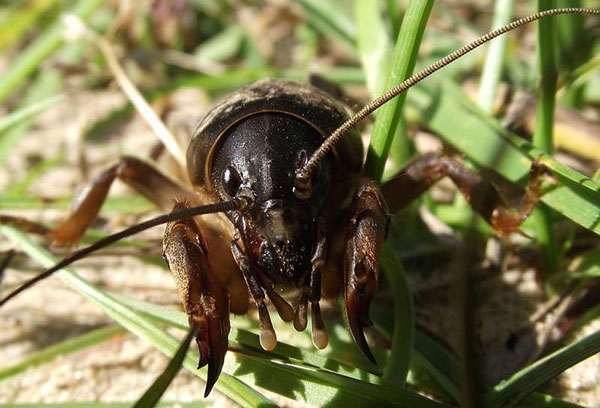
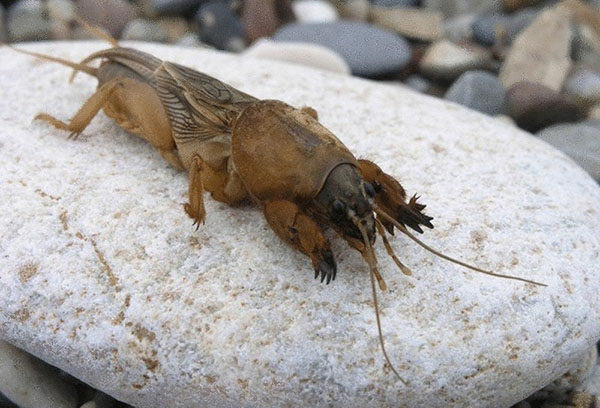
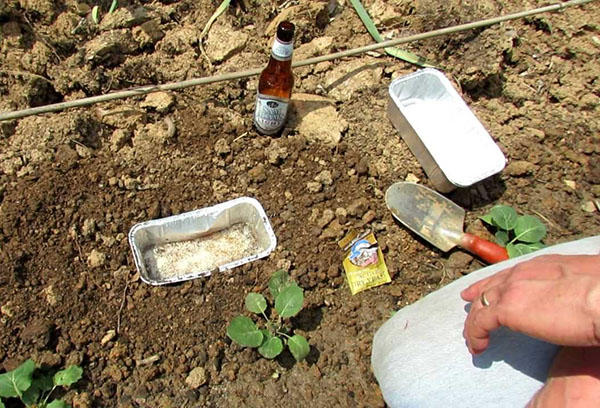
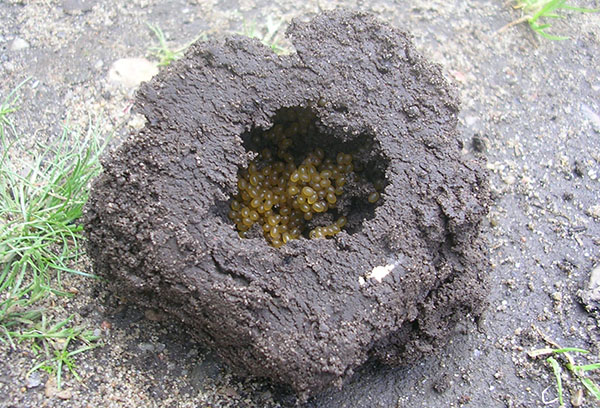
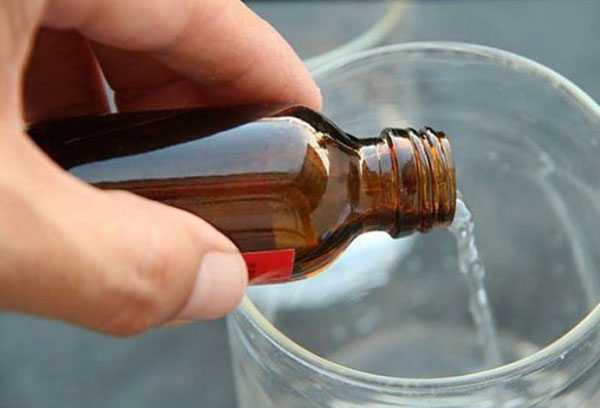
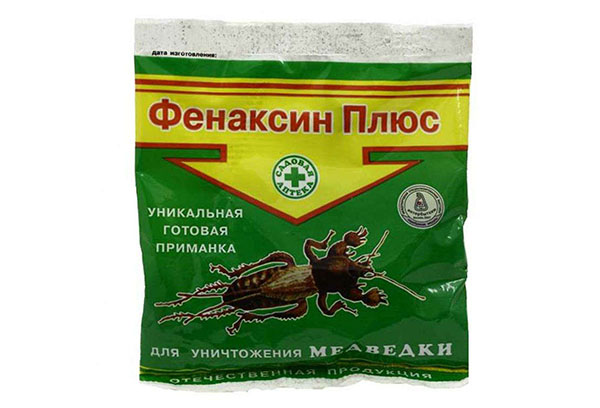
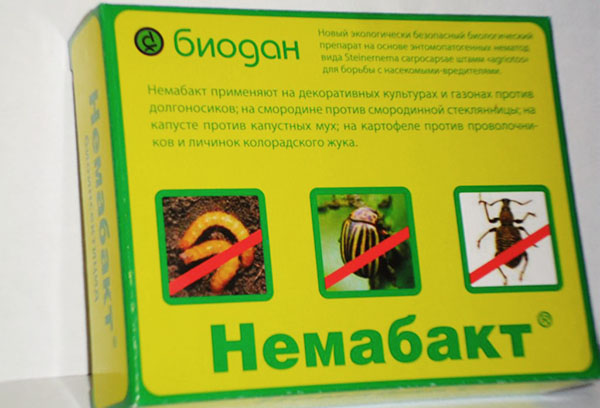

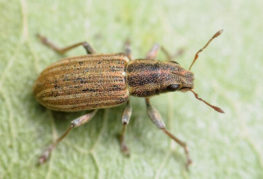

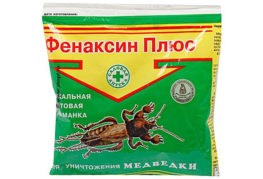
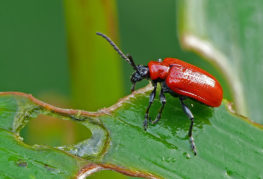
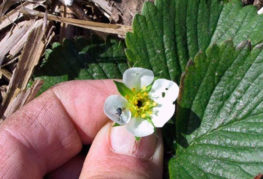
and will be published shortly.